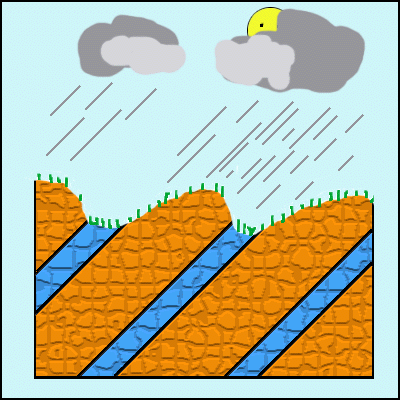THE HYPOTHESIS: Geologic materials exposed at or near the earth's surface undergo continual alteration and wearing away (erosion) due to interaction with the surface environment (air, water, snow, ice, living organisms, etc.). Materials vary in their resistance to this attack; some areas are worn down more rapidly than others. More specifically, valleys or low areas develop in regions underlain by non-resistant rocks, where the wearing away is relatively rapid; adjacent regions, underlain by more resistant materials that wear away less rapidly, are left behind as hills or higher areas. The variation in elevation that results is said to be due to 'differential erosion'.
 | PRESS THE BUTTON TO REVIEW THE ROLLOVER SHOWING RESULTS OF DIFFERENTIAL EROSION. |  |
TESTING THE HYPOTHESIS: If the hypothesis is correct for the landforms of the NY City region, then certain predictions may be made. For example, if high areas and low areas in the NY City region have formed by differential erosion, it may be predicted that areas that have higher elevations should be found to be underlain by more resistant rocks than adjacent areas with lower elevations.
If this prediction is fulfilled, then the hypothesis is supported and strengthened. If the prediction is not bourne out, then the hypothesis is contradicted and weakened.
RETURN TO THE TESTING HYPOTHESES MENU AND PERFORM THE TESTS OF THE DIFFERENTIAL EROSION HYPOTHESIS.

